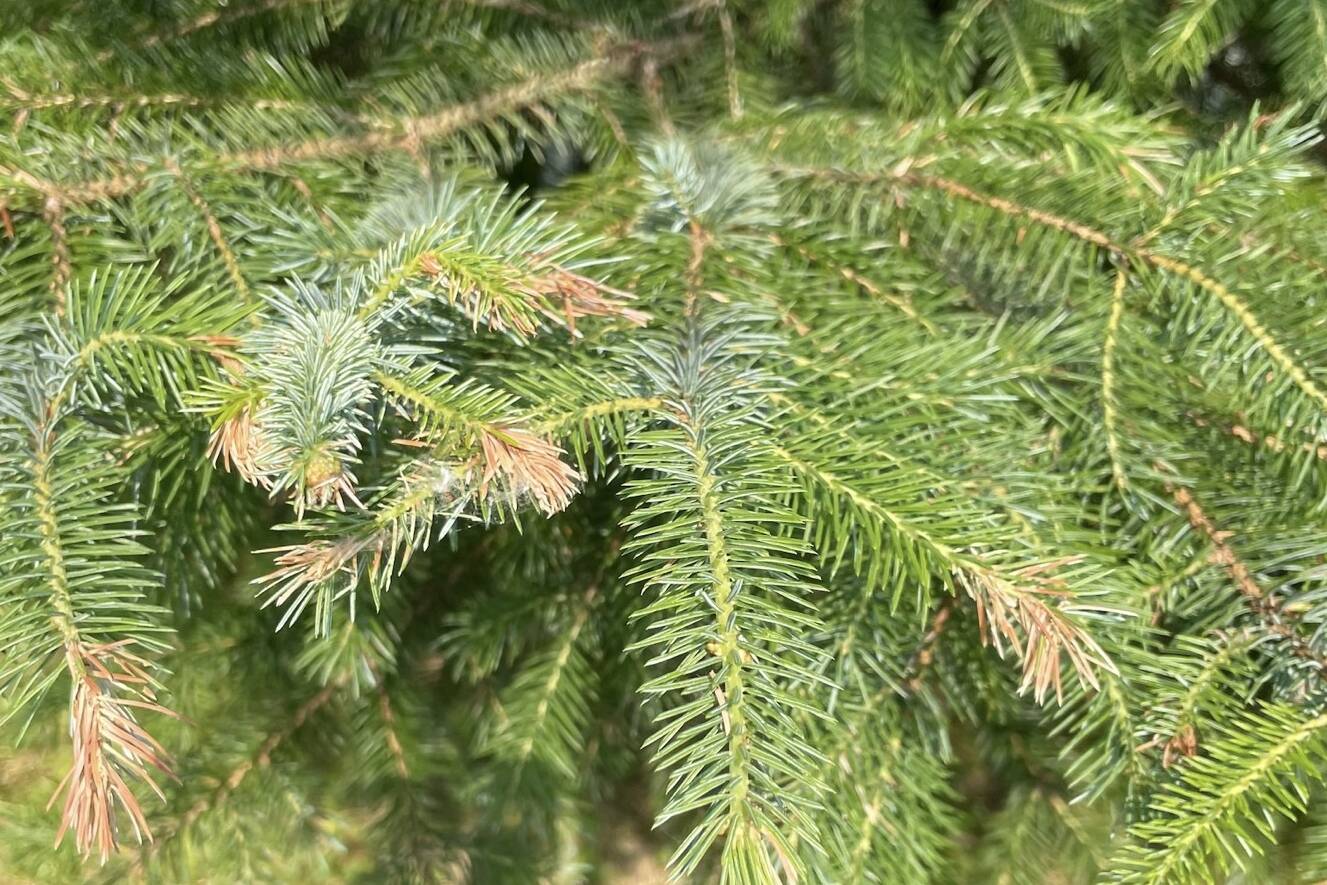This article has been updated to change a reference from frap to frass.
The western blackheaded budworm is back in Southeast Alaska, and while the larvae lack the appendages needed to make an Instagram post, people recreating in the Tongass can help catalog budworms’ meals.
Scientists are asking people to provide photos, videos, or information related to the sightings of the insect or its damage to the Alaska Forest Health Observation’s citizen science project, iNaturalist, a collection of observations of insects and pathogens of forest health interest in Alaska.
“People can really help us improve our monitoring of the forest and be our eyes on the ground,” said Elizabeth Graham, an entomologist for the U.S. Forest Service Alaska Region. “We’ve noticed this year that the caterpillars are starting to feed on Sitka spruce, so any observations people can upload are extremely helpful.”
According to Graham, female budworms lay their eggs on the underside of needles and since most of the focus up to this point has been on the Hemlock trees, those are now heavily defoliated without a lot of needles left on them, leaving little option for the budworm but to move on to the Sitka spruces, giving the Hemlocks a much-needed break.
The most-recent outbreak was first noticed in 2020. Outbreaks can last for several years and can even look quite dramatic in certain areas, however, Graham said it’s not only a natural occurrence within the forest, it can actually be beneficial to the forest floors in the long run.
“As far as a broader ecological standpoint, they’re a natural part of the forest, and really one of their jobs is to kind of create some gaps to the canopy so that there’s more light that can reach the forest floor and really create some change within the forest, even the frass that’s raining down is actually a little bit of a nutrient boost,” Graham said. “They really have a role that they play here, so it’s kind of neat to sort of watch an outbreak like this unfold and see how it can really impact the whole landscape.”
While most of the trees survive the appetite of the budworms and some trees even come out in better conditions, heavy concentrations of activity can lead to the death of some trees.
The last time a major outbreak like this took place in Southeast Alaska was from 1992 to 1995, and this current outbreak is still far from being finished, with the western blackheaded budworm being predicted to continue feeding for weeks to come. The damage will become more apparent over time.
Graham said community engagement through programs like iNaturalist is both important and helpful.
“We really appreciate the eyes from the public, our forest health team is really small, so the observations that we get through iNaturalist and other avenues like that are really helpful to us, in fact, that’s how we first found out about the Hemlock sawfly outbreak was from a member of the public reporting it to us, we definitely wouldn’t have known about it if it wasn’t for that report,” Graham said.
• Contact reporter Jonson Kuhn at jonson.kuhn@juneauempire.com.

